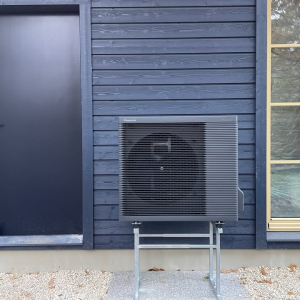(Water) Underfloor heating ensures the best heat distribution across the entire room
Water Underfloor Heating
More and more people are choosing to use water underfloor heating for heating certain rooms. It is not recommended to install underfloor heating in bedrooms, as this heating system has high thermal inertia, making it difficult to quickly adjust the temperature in the room. However, in kitchens, living rooms (where people don't sleep), hallways, bathrooms, toilets, etc., underfloor heating is fully justified and economical.
Advantages of Underfloor Heating
With a stove, fireplace, or radiator heating, it is challenging to achieve evenly distributed heat throughout a room. Underfloor heating, on the other hand, provides significantly better heat distribution across the entire room. Calculations and measurements have shown that the temperature distribution profile with underfloor heating is very close to ideal heat distribution. The heat radiation occurs across the entire floor surface. Furthermore, there is no intense heat circulation in different parts of the room, which significantly reduces dust movement in the air.
Heating a room with underfloor heating is particularly important as it is a contact surface where people walk. The temperature of the foot sole is lower than the average body temperature. In living spaces, considering medical criteria, the average recommended floor surface temperature is between +24 to +30°C. Taking into account the building’s heat losses and ventilation, this always ensures the desired indoor temperature of +20 to +25°C. In bathrooms, washrooms, and saunas, a floor temperature of +35 to +40°C is recommended. Wet floors dry quickly, preventing mold and unpleasant odors.
Heat Distribution in Rooms
How can the heat from a boiler be efficiently used in living spaces? There are specific rules for this as well. The combination of water underfloor heating and radiator heating is becoming increasingly popular in modern house heating systems. These are two independently operating heating nodes. The water temperature for underfloor heating is also regulated by an electronic heating regulator, just like with radiator heating. The temperatures of the floors in different rooms can be adjusted using a flow regulator (rotameter) located on each line at the manifold.
Underfloor heating is suitable for heating all rooms on the lower floors of the house. For heating rooms on higher floors, where bedrooms are usually located, radiator heating is more suitable. With radiator heating, each radiator can be quickly adjusted individually. Underfloor heating, however, has a large mass, which results in high thermal inertia. This leads to a stable temperature that is less responsive to quick adjustments.
Underfloor heating is entirely appropriate for living rooms, kitchens, hallways, washrooms, etc. With underfloor heating, air movement in the room is much less intense than with radiator heating. Near the window, warm air rises from radiators, moves to the opposite wall, cools along the way, and circulates within the room.
The temperature of underfloor heating is much lower, and the heat radiation covers the entire floor surface. Practically no dust-carrying air circulation occurs from wall to wall. A normal floor surface temperature is considered to be between +24 and +30°C. When staying in a room with a floor at this temperature, no discomfort is felt, but the room remains evenly warm. Additionally, the relative humidity in the room is healthier compared to radiator heating, where the air tends to become too dry.





